I recently had an incredible opportunity to take a 3-month sabbatical to look into green healthcare. I spent this time travelling around the world and learning how different healthcare systems are becoming sustainable. My hope was to meet some allies in this field, get inspired by their successes and learn as much as possible.
In general, I saw that the targets for sustainability actions differed depending on existing infrastructure, culture and levels of support.
What are some of the variables that seem to affect the approach to sustainability?
I found that there were 3 main variables that affect the approach to sustainability:
1. Existent infrastructure
- Public transportation – are there buses, metros, trains?
- Bike lanes – this makes active transportation to work so much easier
- Aging buildings – can have major carbon footprints because of inefficient heating or cooling
2. Culture
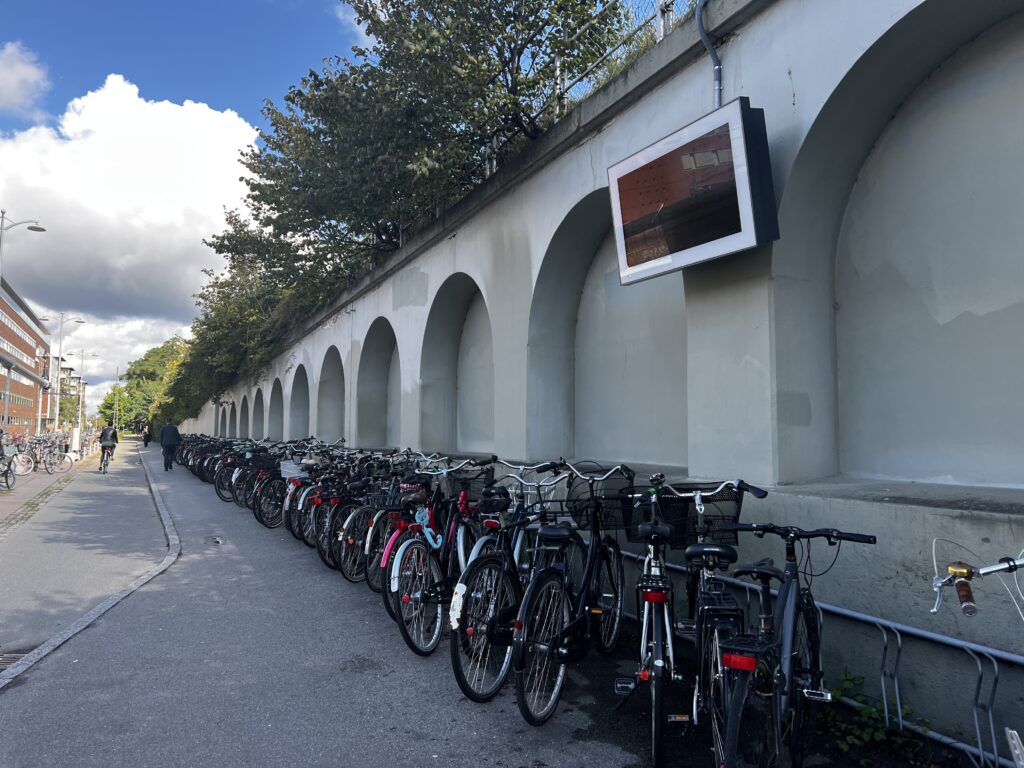
- Consuming and recycling – in some cultures, reducing is stressed; in others only recycling. Sorting recyclables properly seems to be a universal challenge!
- Riding bikes – very much a part of the culture in some countries, and not at all in others
- Cost of labor – an unexpected finding in Denmark was that medications are dispensed in the same bottles in which they came from the manufacturer. Presumably because of the high cost of labor, pharmacists aren’t employed to count out the prescribed numbers of tablets. So, if a doctor prescribes a course of 15 tablets, but the manufacturer supplies these tablets in bottles of 20, 5 tablets are wasted.
3. Kinds of Support
- Top down – progress can be made quickly when there is a sustainability officer in place with time to dedicate to sustainability programs and a budget to go with it. Another key component is support from the higher-ups to implement the suggested changes.
- Bottom up – grassroots projects can help build momentum as stakeholders are increasingly involved. One key component of the UK’s National Health Service’s (NHS) huge successes on the path to Zero Carbon is their rapid support of grassroots projects. In the words of Nick Watts, the Chief Sustainability Officer, they are empowering health professionals to “run at this problem” with solutions, and “the NHS has their back”.
- Partnerships – when there’s no funding available, sometimes sponsors or partners can be found to make projects possible.
Connecting with Sustainability Officers around the world
I found many contacts by reaching out to other attendees of the excellent conference CleanMed Europe 2023. A couple connections were also made through Healthcare Without Harm and Global Green and Healthy Hospitals. I had very little success writing to different hospitals and asking about sustainability issues if there wasn’t an introduction or connection made online first.
Iceland
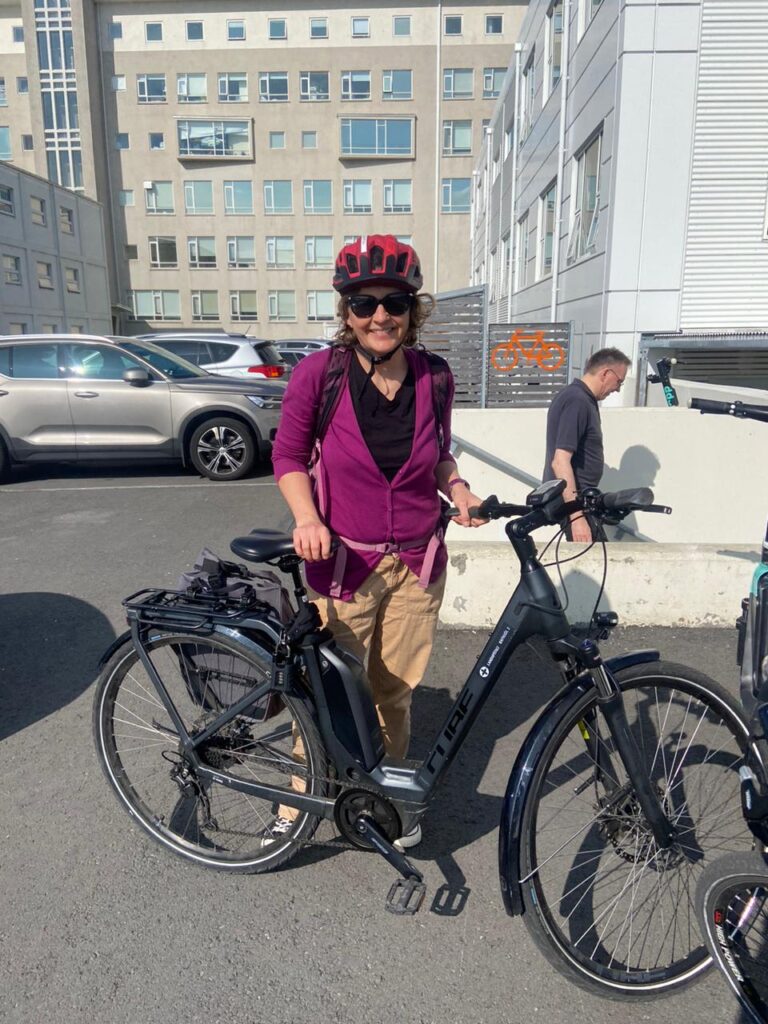
In Reykjavik, I met with Hulda Steingrimsdottir, a sustainability guru who had been at the Icelandic hospital Landspitali for 10+ years and effected some huge changes while there. Landspitali’s carbon impact calculation showed that the biggest impact from the 100+ building hospital complex was from transportation costs. An average of 3 cars per Icelandic household also suggests significant emissions from transportation even outside of the healthcare sector.
Hulda used the existing infrastructure of bike lanes and public transportation and created initiatives for active transportation to work and between work buildings. Bike sheds to store workers’ bikes, rentable bikes, tax-free loans for purchase of e-bikes, free e-bike trials and digitalized, clear bus schedules within buildings supported workers in going green.
Hulda started many other initiatives, involving people throughout the hospitals. She built up a following on the hospital social media page, posting regularly about sustainability initiatives. She included one on how a volunteer group recycled old gowns into purses and carriers for telemetry monitors.
One of Hulda’s key nuggets of wisdom is to “Communicate Your Progress”. This makes so much sense. We are nearing a social “tipping point” with increasing numbers of people joining the movement for climate action. Communication of successes and shared acknowledgements are key to driving this momentum.
Denmark

In Denmark, I met with Ulla Brandt, a sustainability officer working in the Capital Region, including at the Rigshospitalet in Copenhagen. That region’s carbon impact calculation showed that the largest contributor to their carbon footprint is 33% to medical equipment. Ulla and team have enacted some major initiatives to reduce this. They have focused largely on sustainable procurement and have environmental requirements with all purchases. They will gradually increase the sustainable requirements in these tenders, putting pressure on manufacturers to become more sustainable.
Ulla and colleagues have also set up a re-use platform so that furnishings can be swapped around the 7 hospitals in the region and decrease this source of waste. They have many other initiatives as well. With these measures tackling their largest carbon contributor (medical equipment), Denmark’s Capital Region is on a good path to meeting their mandate of 50% reduction in emissions by 2030.
Belgium
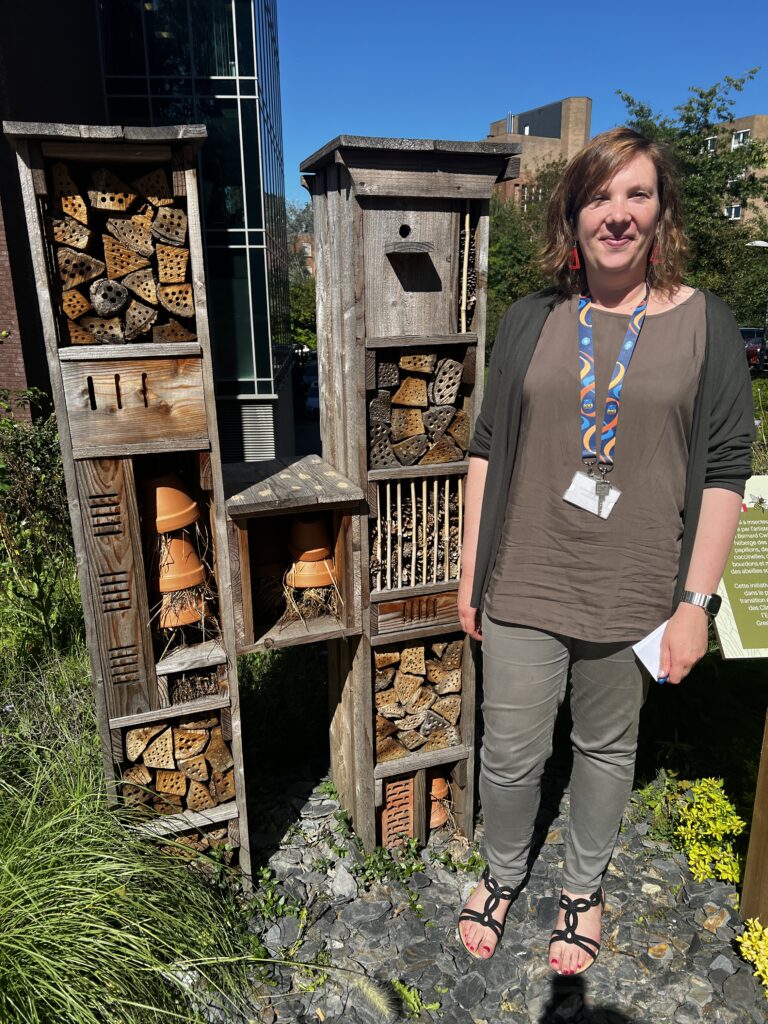
In Belgium I met with Marie Loriaux at the private hospital site Sainte Elisabeth within the Europe Hospitals. When I met Marie, she had just finished an 18-month stint as project manager to achieve a 3-star eco designation for the hospital. Marie met this goal with a big array of projects including birdhouse construction, artwork to bring awareness to endangered species, a bug hotel, vending machines selling plant-based locally sourced food, e-bike chargers, solar panel installations and safe bike sheds. Impressively, Marie accomplished these initiatives without a budget, but by finding sponsors and partners.
Unlike the other hospitals in Europe where I stopped, Marie’s hospital has not yet done a climate impact calculation. As Marie was stepping into a new role, there was no further job opening for a sustainability officer at Clinique St. Elisabeth. But as Belgium has agreed to be carbon neutral by 2050, eventually this will need some funded attention. And Marie’s initiatives already in place will be an excellent springboard from which to advance.
Switzerland
In Geneva, Switzerland I met with Sophie Meisser, sustainability lead at the Hospitaux Universitaires Geneve (HUG). The HUG is widely known in sustainability circles as a powerhouse of initiatives in climate action within healthcare.
The HUG was the first hospital in Europe to calculate their environmental footprint in 2009. Since 2021, HUG are doing yearly calculations of their carbon footprint to ensure they’re staying on target to achieve their sustainability goals.
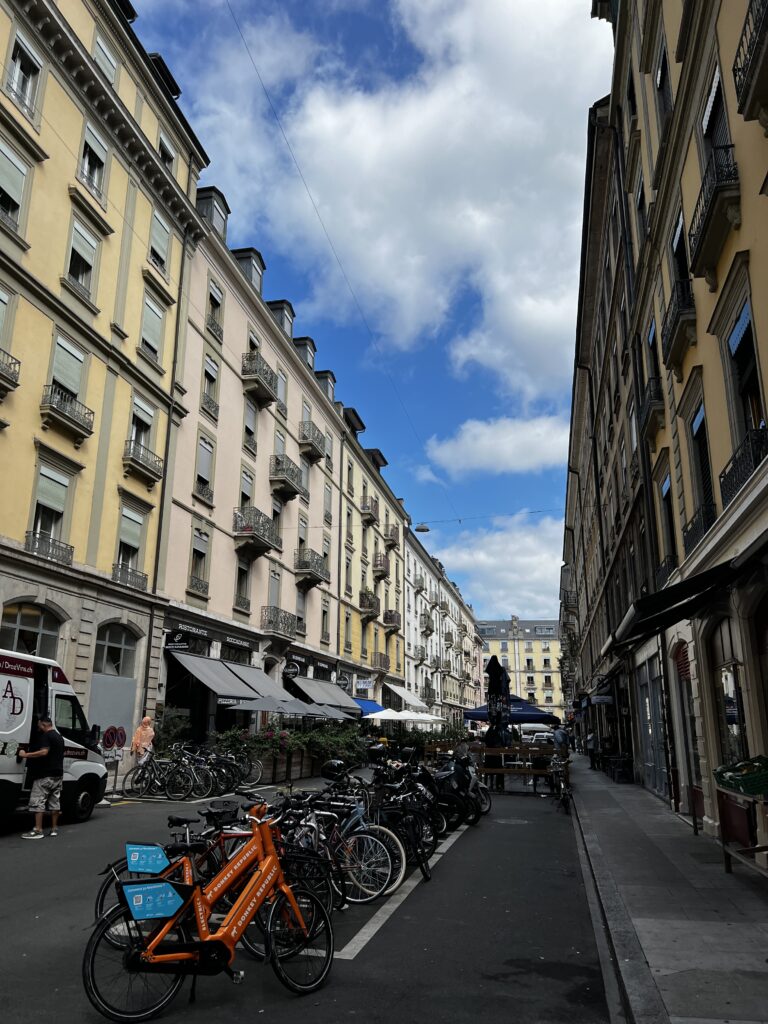
In 2020, to tackle the challenge of meeting the 2030 Sustainability Goals, an impressive 83-point action plan was developed through a participatory approach. During this time, more than 150 proposals were fed into a digital participatory platform. 522 HUG employees, patients, other HUG stakeholders and the general public were actively involved in developing the action plan. This level of participation from so many stakeholders bodes very well for the success of the HUG’s sustainability movement.
In Geneva I also met up with Sylvia Basterrechea, program lead at the Geneva Sustainability Centre. This section of the International Hospital Federation (IHF) has a mission to “equip hospital leaders with the information, tools and skills to deliver a net positive impact for a healthy and resilient future.” Their growing website here has a ton of information, workshops and tools to help hospitals become more sustainable. Seriously, check out this awesome website. It is encouraging to know there are passionate people like Sylvia working on sustainability issues and keeping our planet habitable.
Madagascar
I chose to visit Madagascar because I lived there 20 years ago and know the language as well as how to get around. Unfortunately, things seem worse for the people of Madagascar than they were 20 years ago. Over this time, the one paved road going down the center of the island has become full of potholes and other obstacles; it takes twice as long to drive this road than before. The population has nearly doubled in the last two decades, and resources and food were already limited back then. Also, the government seems fairly corrupt and a bit incompetent.
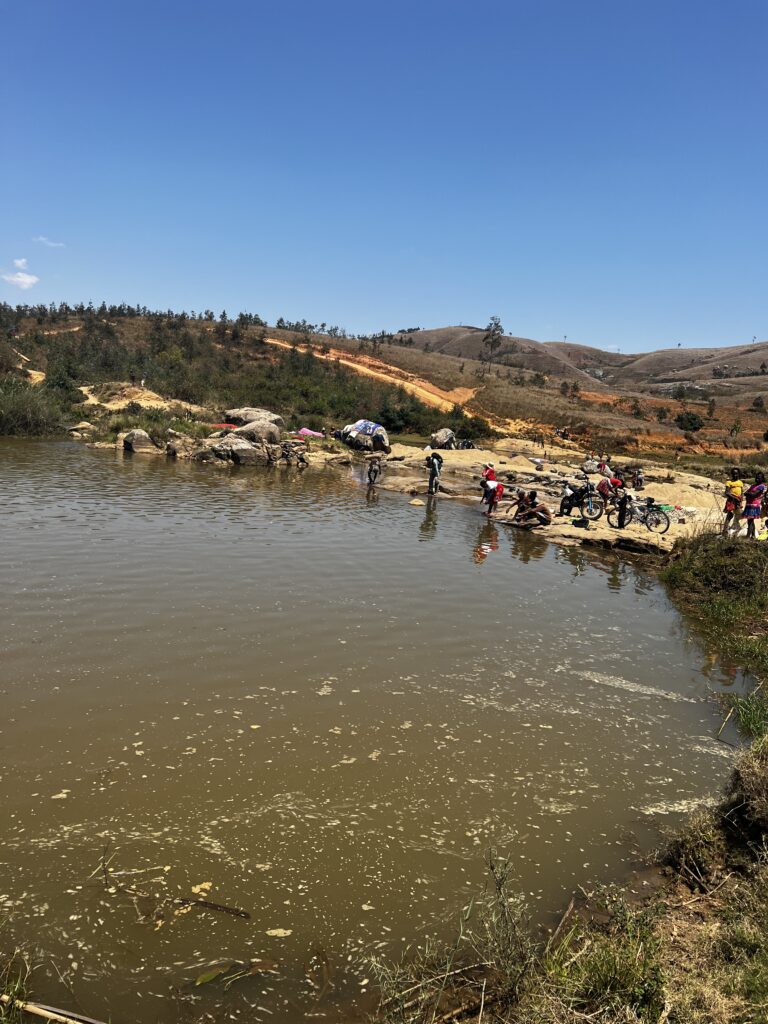
In 2022, a cyclone wiped out a bridge between Sendrisoa and Andringitra National Park (where my husband served in the Peace Corps), and caused untold damage to remote villagers’ homes and facilities. It was heartbreaking to see that there had been no government support to rebuild this bridge. Scores of people who had made their living catering to tourists can no longer make their living in this way, because of a cyclone/climate disaster and government inaction to fix a bridge.
Unfortunately, I was not able to meet up with a healthcare worker while in Madagascar. On the day I was to meet up at a hospital in the capital, military police were in their riot gear and controlling crowds on the main square. It was too unsafe to go to the hospital.
This experience brought home to me that the burden of climate action and sustainability must be on more advanced countries. In countries where the vast majority lives in poverty, simply surviving is hard work.
Nepal
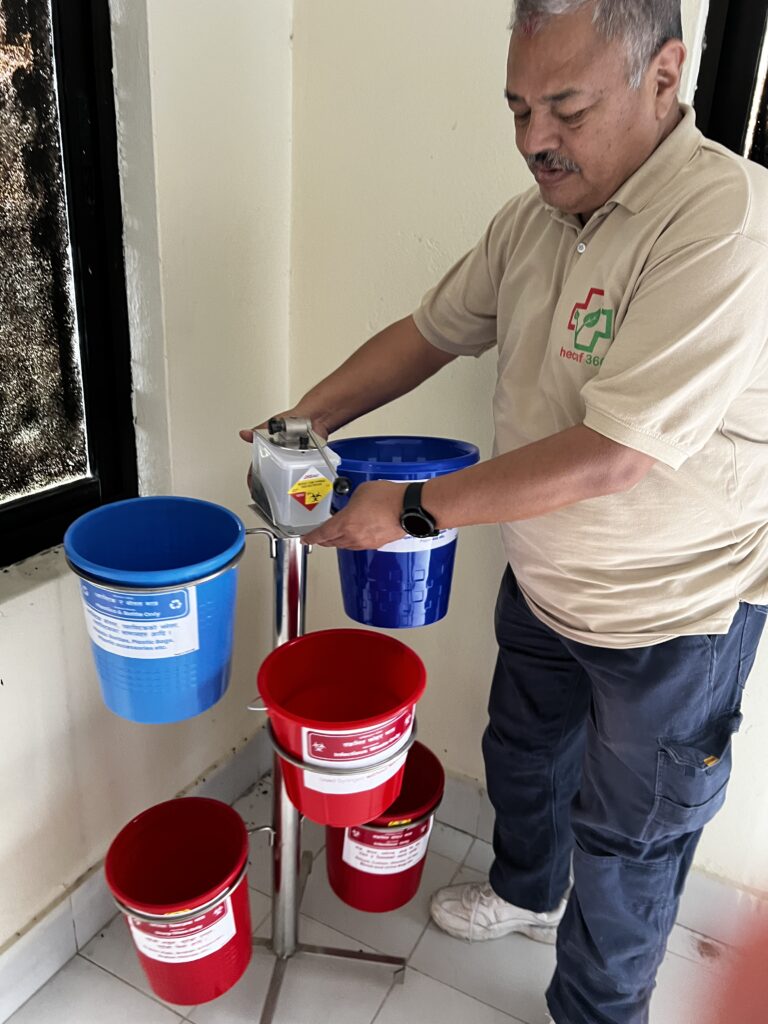
In Nepal I had the good fortune to spend a day with Mahesh Nakarmi, director of Health Environment and Climate Action Foundation (HECAF 360). An engineer by training, he has been instrumental in reducing the potentially very infectious waste stream from many of Nepal’s hospitals. Previously, infectious waste was treated as most other waste in Nepal and dumped on streets. There, children, animals and others could stumble upon needles, blood, amputated limbs or other potentially infectious, dangerous waste. Mahesh, who professionally specializes in healthcare waste management, has developed mechanisms to deal with organic, general, infectious and pharmaceutical waste.
While bio-digesters safely deal with organic waste like placentas, HECAF has developed another system for inorganic waste like contaminated plastics.
The separation of recyclables begins at the bedside, where a moveable medication trolley with a built-in waste segregation system accompanies caregivers. On this stand sits a clever, lever-action device to cut the needle from syringes, as well as multiple buckets. Infectious waste (ie used gloves, contaminated gauzes) go in one bucket, syringes in another, broken glass, paper and plastics all in their own separate buckets, which are tailored to the specific hospital’s needs. These items then get disinfected by autoclaving. (In case you’re wondering, Mahesh and his team carry out regular testing to ensure that infectious material has been disinfected by this autoclaving. More on this in a future blog post). The different waste products are then stored separately and sold to recyclers, with income going into the hospital account.
HECAF 360 has brought this waste management system to many hospitals in Nepal, as well as a few sites internationally, and there have been clear subjective improvements.
Singapore
The final stop on my sabbatical was the island country of Singapore. In Singapore, 6 million people live in space that is half the size of Rhode Island. I knew they must be quite good with sustainability and efficiency. I met with Gladys Wong, a nutritionist and member of Khoo Teck Puat Hospital’s (KTPH) Green Team.
Sustainability was a huge consideration when KTPH built a new facility in 2012. For example, one inpatient wing had excellent air flow from wind currents and therefore wouldn’t require air conditioning. Also, all outpatient offices were kept in one wing so that this area could be completely powered down at night and on weekends. Gladys says that there is plenty of funding available for good projects, and that bottom up programs at KTPH are well supported.
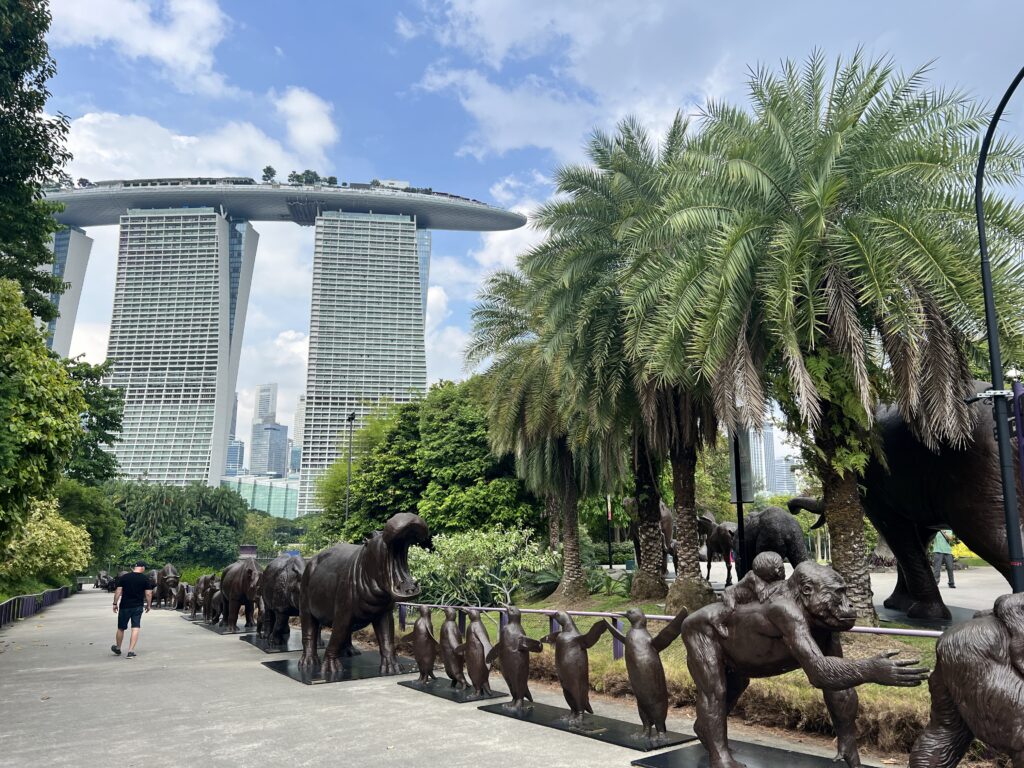
Singapore is nicknamed the “City in a Garden” for good reason. I was impressed with the incredible vegetation growing on and around huge buildings, essentially everywhere one looks. The rivers appear healthy with fish, otters and the occasional monitor lizards living peacefully. This was a major change since the 1980s, when a massive effort to clean Singapore’s filthy rivers was completed.
There is a huge effort to recycle in Singapore, with metal containers scattered about where you can receive points for contributing recyclables. There is also curbside pickup of recyclables. But according to the pharmacists I met up with, it’s often still unclear in which bin to throw various waste. I was a bit surprised that there doesn’t seem to be much effort to refuse or reduce consumption. Recycling alone is encouraged, which isn’t ideal: recycling still requires a lot of water and energy. Decreasing consumption would be even better.
Coming up
These are some of the highlights from my recent sabbatical. Stay tuned for more posts about these stops as well as my learnings from the Netherlands, Cambodia and Vietnam. Also, what do we do now with this information? Watch this space.



[…] sizable movement is already underway, and much progress has been made in the last 10 years. Some areas of the world are already close to reaching a social tipping point, where enough people are involved that the […]